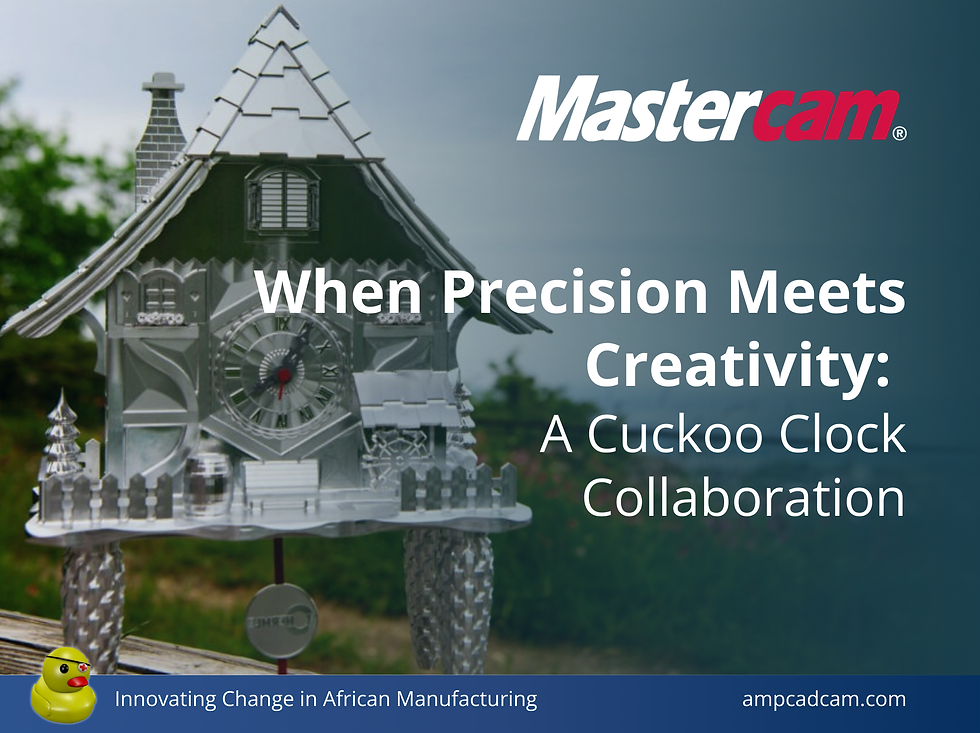The Evolution of CAD/CAM: From Drawing Boards to Digital Designs Using Mastercam
- AMP Team

- Nov 8, 2023
- 3 min read
The world of manufacturing has undergone a profound transformation over the past few decades. The vanguards of this transformation are the sophisticated CAD/CAM software systems, like Mastercam, that have continuously raised the bar for what's possible in manufacturing. Mastercam has not merely kept pace with the evolving industry but often propelled it forward with innovative solutions. Let’s dive into the history and progression of these software marvels from their simplest applications to the wonders of 5-axis machining.
From Drawing Boards to Digital Designs
There was a time when drafting tables and physical blueprints were the heartbeats of design. The leap from these manual processes to 2D computer-aided design (CAD) was nothing short of a revolution in the 1980s. Early CAD software brought a significant reduction in the time and effort required to create and modify designs. Mastercam entered the arena, initially offering rudimentary 2D design capabilities, which were revolutionary at the time.

3D Modelling – Adding a New Dimension to Precision
The introduction of 3D modelling was the next quantum leap in CAD/CAM evolution. As Mastercam introduced 3D capabilities, manufacturers could visualize parts in a way that wasn’t possible with 2D sketches. This not only enhanced the precision of designs but also allowed for the creation of more complex geometries that were unthinkable in the 2D realm.
Mastercam's very first YouTube Video from 12 years ago
From Design to Reality: CAM Breakthroughs
The seamless integration of Computer-Aided Manufacturing (CAM) with CAD meant that designs could go directly from screen to machine, with Mastercam leading the charge in refining these processes. The development of CNC programming within Mastercam allowed for the automation of machine tools, fostering not only precision but also unprecedented speed in manufacturing.

The Dawn of Multiaxis Machining
The introduction of 4- and 5-axis machining capabilities was a game-changer. Mastercam’s adoption of multiaxis machining tools enabled manufacturers to create intricate and sophisticated designs that were once impossible. This advancement cut down on the need for multiple setups, reducing errors, and saving crucial production time.
Optimising Efficiency with High-Speed Machining
Mastercam’s high-speed machining algorithms were revolutionary, enabling machines to cut parts faster and with greater precision. These software advancements meant that not only could more complex parts be manufactured, but they could also be produced at speeds that would have been unfathomable in the past.
Simulation and Verification: Ensuring Perfection Before Production
The development of simulation tools within Mastercam provided another layer of innovation. Being able to simulate and verify the machining process before the actual cutting begins has minimized the risk of costly errors and material waste, further improving the efficiency of the manufacturing process.

Connectivity and the Era of the Smart Factory
Today, CAD/CAM software like Mastercam is at the heart of Industry 4.0, offering connectivity and data analysis capabilities that enable smart factory initiatives. The integration of these systems into the larger framework of manufacturing operations has streamlined workflows and heightened production intelligence.

As we look to the future, the trajectory of Mastercam hints at even more integration with virtual reality, AI, and advanced robotics. The evolution of CAD/CAM software continues to redefine the boundaries of manufacturing, ensuring that the industry not only keeps up with the times but often stays a step ahead.
For those who wish to see how Mastercam has practically applied these advancements, a treasure trove of resources is available on their YouTube channel. From tutorials to testimonials, it’s a window into the practical world of CAD/CAM advancements.




Comments